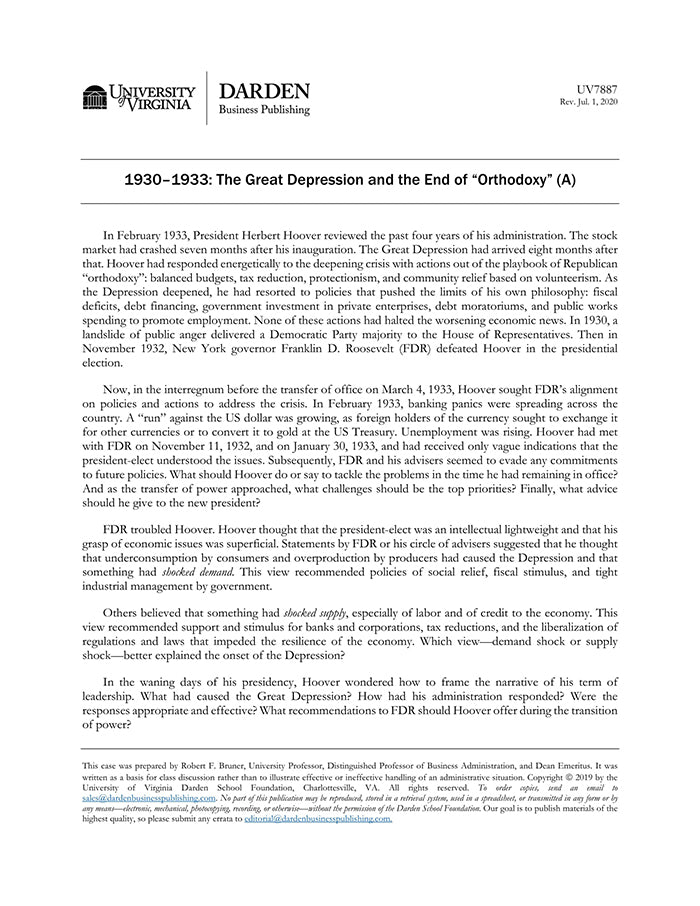1930-1933: The Great Depression and the End of "Orthodoxy" (A)
受取状況を読み込めませんでした
In February 1933, President Herbert Hoover reviewed the past four years of his administration. He had met a stock market crash and a recession that worsened into the Depression with actions out of the playbook of Republican "orthodoxy": balanced budgets, tax reduction, protectionism, and community relief based on volunteerism. Yet as the Depression deepened, Hoover pivoted toward policies that pushed the limits of his own philosophy: debt financing of fiscal deficits, government investment in private enterprises, social relief, debt moratoriums, and public works spending to promote employment. None of these actions had halted the worsening economic news. In November 1932, New York governor Franklin D. Roosevelt defeated Hoover in the presidential election. Now, in the interregnum before the transfer of office on March 4, 1933, economic conditions turned suddenly worse. Consumers and business leaders deferred spending until the new administration outlined its policies. Hoover sought Roosevelt's support for policies and actions to address the crisis. What should Hoover do or say to elicit that support? The answers lay in careful diagnosis of the problems and prioritization of remedies. Opinion was divided on the question of whether demand shocks or supply shocks had caused the Great Depression-each would dictate different policy actions. What was the appropriate diagnosis? What should be the remedies? The A case presents the dominant narrative; a suggested B case provides correspondence between Hoover and Roosevelt.
【書誌情報】
ページ数:42ページ
サイズ:A4
商品番号:HBSP-UV7887
発行日:2019/10/15
登録日:2020/1/23


